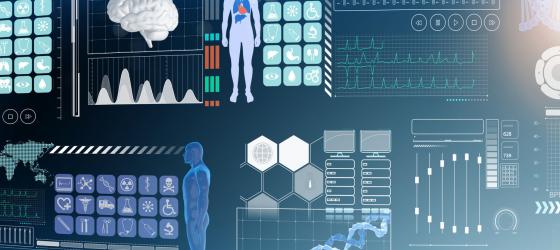Summary
The degree program aims at training engineering professionals who are capable of operating in numerous application, research and innovation domains in the medical-biological field, which naturally require inter-disciplinary skills.
You will achieve knowledge and skills that are applicable in different domains: neuro-technologies, rehabilitation and assistive technologies, cybernetic and bio-inspired systems, biomaterials, engineered tissues and cells, medical instruments and diagnostic systems, clinical engineering, health information systems, e-health and m-health.
Learning by doing
The course combines lectures with:
- lab activities and development of projects on cutting-edge areas, often in collaboration with external institutions
- internships in research labs, clinical facilities and rehabilitation centers
- seminars and supplementary courses taught by industry professionals
Career perspectives
In the industrial sector, a bioengineer develops medical and surgical devices, in-vitro diagnostic systems and healthcare technologies.
Many bioengineers find employment in innovative start-ups and some become entrepreneurs themselves.
In clinical facilities, research institutes and rehabilitation centers, bioengineers can manage technical services and diagnostic laboratories.
A significant fraction of graduates enrolls in PhD programs.
Did you know that...
- About 40% of students carry out their thesis work in companies or research institutions outside the university. About 25% are carried out abroad
- The Degree Program in Biomedical engineering of the University of Genoa was, together with that of the Polytechnic of Milan, the first to be established in Italy, in 1995
Contents
Interdisciplinarity as a key to innovation
Application of new technologies and new scientific discoveries requires a dialogue between different disciplines. The Master's degree program in Bioengineering helps to develop a distinctly intersectoral, multidisciplinary attitude, naturally aimed at innovation.
The degree program aims at consolidating physical, mathematical and engineering skills and knowledge in the life sciences field, and to provide specialistic skills in the area of bioengineering.
You will learn to describe, simulate and analyze systems and signals of interest for medicine and biology. You will learn about biomaterials, devices and instrumentation for diagnosis, therapy and rehabilitation and the molecular, cellular and cognitive basis of human perception and behavior. You will learn about the organization of patient management and assistance structures, the information systems used in them and the related ethical implications.
A multi-purpose professional with a solid technical-biological background
The course is aimed at graduates in Biomedical Engineering or in other Industrial and Information Engineering fields, but is also accessible to graduates from the various sectors of Mathematical, Physical and Natural Sciences.
The development of personal skills and abilities will be expressed especially during thesis work, to which the last semester is almost entirely dedicated.
The course will also provide you with an ability to relate and interact with professionals with a variety of skills and cultural backgrounds.
Prospective students
Why Bioengineering?
Because you are fascinated by the technology and the functioning of the human body and, when you see the video of a person who has lost the use of a limb and controls a robotic prosthesis directly with his brain or you read about serious diseases that can be diagnosed in time to be treated thanks to devices so small that they cannot be observed even with a magnifying glass, you get excited and would like to contribute to the realization of all this.
If you have a solid technical and scientific background, the Master's degree in Bioengineering will provide you with the knowledge and tools to tackle problems related to human health and well-being, using the systematic approach of engineering.
The fields of application of bioengineering are innumerable and constantly expanding thanks to the emergence of new technologies that open up new application scenarios.
